Petrochemicals Synthetic Fabrics Resins 02-04-2020 - Arhive
Petrochemicals Synthetic Fabrics Resins
Crude Oil Prices Trend

-US ethanol plants idled as demand collapses
US ethanol producers are reducing output and idling plants, as margins tumble with prices amid coronavirus-related quarantine protocols that have slashed motor fuel demand.
Annual US ethanol output capacity has dropped by more than 3bn USG over the past month as producers reduce operations and idle plants, according to trade group Renewable Fuels Association (RFA). Petrochemicals Synthetic Fabrics Textiles
That is about 20pc of the roughly 15bn USG blended into the gasoline pool each year. About 30-40 plants are fully idle and another 40-50 have reduced output, RFA chief executive Geoff Cooper said.
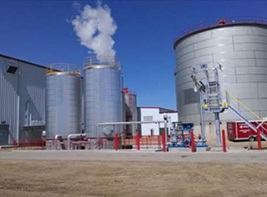
-Europe ethylene April contract falls by €200/tonne to 11-year low
The European ethylene contract reference price for April has been set at €720/tonne, down by a record €200/tonne from March.
This is the lowest monthly contract reference price since June 2009 and the largest single month-on-month adjustment since the contract timing changed from quarterly to monthly in January 2009 in response to the 2008 financial crisis. Petrochemicals Synthetic Fabrics Resins
The settlement was directly confirmed by four producers and five consumers, all but one are non-integrated.
The widely expected decrease was driven by the steep fall in crude oil and primary feedstock naphtha values month on month.
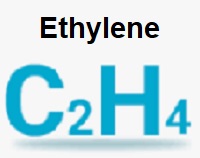
-Axion Polymers to showcase recycled polymer grades at Interplas 2020
Axion Polymers will be showcasing its range of locally sourced and produced Axpoly recycled PP and ABS polymers grades at Interplas 2020 from 29 September – 1 October.
The Manchester-based plastics recycler’s technical sales team will be available on stand A8 to discuss how injection moulders and manufacturers can use high-quality recycled polymers, or bespoke blends with virgin material, in a wide range of product applications.
Axion Polymers produces two types of recycled polymer pellet from its advanced re-processing plants for Automotive Shredder Residue (ASR) derived from End of Life Vehicles (ELV) and mixed waste electrical goods (WEEE). Petrochemicals Synthetic Fabrics Resins
These are Axpoly PP and ABS.

Given the health emergency generated by the COVID-19 pandemic, AIMPLAS is working to make its knowledge of materials, its capacity for design, prototyping and manufacture, and its material resources available to public and health authorities in order to facilitate supply of personal protective equipment (PPE). Petrochemicals Synthetic Fabrics Resins
AIMPLAS
Specifically, AIMPLAS is carrying out a feasibility study to be able to manufacture masks with replaceable filters using injection moulding processes. AIMPLAS has therefore created its own design and contacted companies and vocational education and training centres about manufacturing the moulds. In addition, experts from AIMPLAS are cutting and supplying transparent PET sheets from a reel donated by Manufacturas Arplast to manufacture protective face shields and distribute them to hospitals.
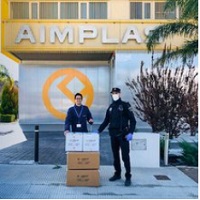
-China petrochemicals sector braces for global recession as coronavirus leaves economies reeling
The expected economic recession in the Asia-Pacific region triggered by the coronavirus pandemic will reverberate across the petrochemical supply chain as global demand grinds to a halt, even as China slowly goes back to work.
“An enormous first-quarter shock in China, shutdowns across the US and Europe [due to] local [coronavirus] transmission, guarantees a recession across the Asia-Pacific,” said Shaun Roache, Asia-Pacific chief economist for S&P Global Ratings on March 30.
“We now expect the hit to output for Asia-Pacific to be as large as the Asian Financial Crisis of 1997-1998,” he added. Petrochemicals Synthetic Fabrics Resins

-Moving toward a circular economy
Plastic waste is a significant environmental issue in Indonesia, deeply impacting the whole country. Indonesia is second only to China as the world’s largest contributor to ocean plastic pollution. Four of its rivers – Brantas, Solo, Serayu and Progo – are on a list of the world’s dirtiest rivers, carrying the most waste into our oceans.
A 2016 World Economic Forum report estimated there will be more plastic in the ocean than fish by 2050. Experts agree that a global shift toward a ‘circular economy’ is needed; one that aims to eliminate waste and encourages continual use and re-use of resources.
In September 2018 the Indonesian government announced its plan to be on the front lines of this global shift towards circular models of waste management and to reduce plastic marine debris by 70 percent by 2025.Petrochemicals Synthetic Fabrics Resins

-Any chance for the bearish nylon 6 market?
With crude oil continues bottoming down, decline goes on in benzene, CPL and nylon 6 chip products. But for this series of products, CPL and nylon 6 chip have no more margin, and the downward space is decided by benzene.
As one of the many chemical products, the cost for benzene is hard to calculate due to its complicated production techniques. In Feb 2020, when almost all aromatic market dropped steeply, benzene market had been supported firmly above 5,000yuan/mt. Is it because of high cost? Apparently not! Based on the cost of naphtha price plus $130/mt, margin of benzene is as below chart, pretty good in Mar 2020. Is it because of benzene’s own supply-demand structure? Certainly not either! As its major downstream products styrene monomer and CPL both dropped freely, and production was cut greatly as well, benzene market fundamentals were by no means good.Petrochemicals Synthetic Fabrics Resins
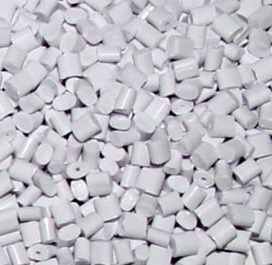
-Textile market struggling in the bottom
- Why the Fed slashed rates again but the market didn’t go for it?
Recently, the Federal Reserve slashed rates by 50 basis points on Mar 3, and then on Mar 15, it announced an emergency rate cut of 100 basis points to 0-0.25%, a second emergency rate cut in half a month. Petrochemicals Synthetic Fabrics Resins
Since Mar 26, the deposit reserve ratio moved down to nearly zero, and a new round of $700 billion for quantitative easing, QE4, was launched. Commercial Paper Funding Facility (CPFF) will a 1.2 trillion-dollar fiscal stimulus proposal to support the flow of credit to businesses and households by issuing $ 1,000 directly to the public.
Since emergency rate cut on Mar 3, more than a dozen central banks around the world have begun actions to cut interest rates and purchase assets simultaneously. Although the wave of interest rate cuts is coming, the effect seems to be small and the market does not work efficiently.
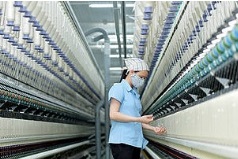
-Asia PX producers table offers for April ACP
Asia Contract Price (ACP)-linked paraxylene (PX) producers have submitted their offers for the April benchmark price.
Japan’s JXTG Nippon and Energy, along with South Korea’s SK Global Chemical and S-Oil, have submitted offers at $680/t cfr, Japan’s Idemitsu Kosan made its offer at $630/t and ExxonMobil at $600/t. Petrochemicals Synthetic Fabrics Resins
Negotiations for the April ACP are due to be finalized today.

-Historically low LLDPE still at risks
With the continuous spread of the coronavirus pandemic, the whole world has entered a major economic crisis. As an old saying goes like this, misfortunes never come singly, the OPEC+ countries have started a crude oil price war in March.
For the LLDPE market, the coronavirus pandemic encounters a fierce crude oil price war, which results in a sharply lower LLDPE upstream cost and an unprecedented contraction in downstream demand.
Under the attack, LLDPE futures falls below 5300yuan/mt and spot have dropped to around 5500yuan/mt—an absolute low level that no one in the market has ever seen before.Petrochemicals Synthetic Fabrics Resins
Unfortunately, however, such low-price also occur in other chemical markets, such as ethylene, PTA, MEG, etc., and these products all struggling in their own historical lows. Under the influence of crude oil, the market of downstream products is difficult to hit bottom, and there is still a driving force and space for further decline.
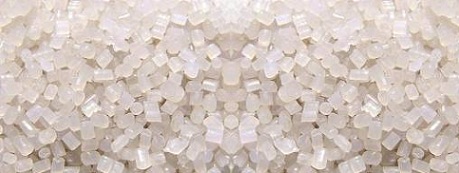
Petrochemicals Synthetic Fabrics Resins
